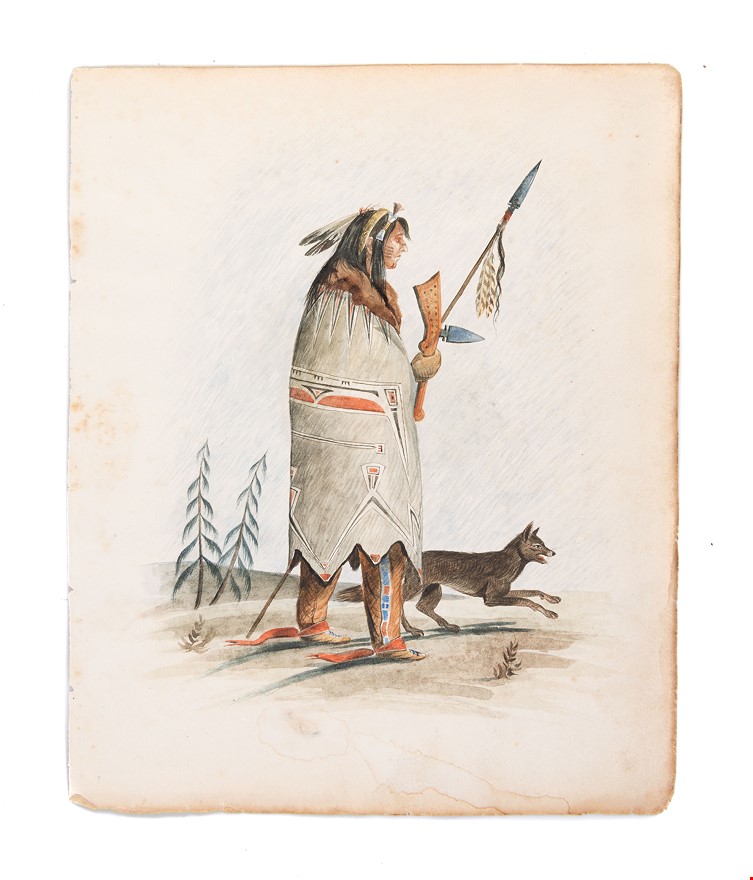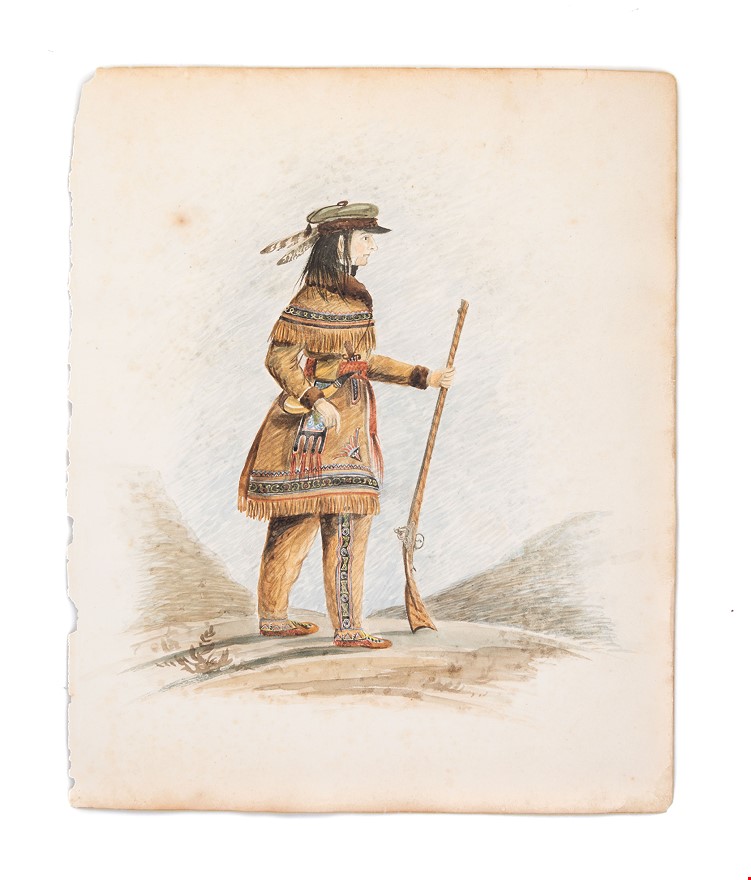[Two watercolours depicting a Native hunter in traditional dress, and a trapper or voyageur in elaborate buckskins with a European hat.]
INDIGENOUS AMERICANA ; FUR TRADE (c.1824-1850].)
£12500.00
Please contact us in advance if you would like to view this book at our Curzon Street shop.
FUR TRADE PORTRAITS
Watercolours on matching leaves removed from a sketchbook. Each 240 by 195mm. Watermarks "G. Yeeles 1823". Minor foxing to the margins, slight browning at edges, with a small waterstain and paper flaw to lower margin of one leaf. Else very good. [North America,
Two fine frontier watercolours showing characters almost certainly associated with the fur trade.
Both full length profile studies, the first depicts an Indigenous man holding a gunstock war club and spear, the latter ornamented with feathers and hair. He wears a heavy buffalo cloak with fur turned out at the collar, painted with a distinctive pattern. His buckskin breeches have a beaded trim and red ribbon at the ankle. Beside him runs a small black hunting dog, and in the background are two coniferous trees. In his hair are two large feathers, a band, and beaded ornaments. His complexion is tan, and on his face he wears red and black paint.
The second watercolour depicts a man in a similar stance, clasping a flintlock rifle by the barrel. He is dressed in elaborate buckskins with fur collar, fringe, and beading, worn with a powder horn and beaded bag across his body. Tucked into a sash about his waist is a knife with beadwork sheaf. In his long straight black hair are two feathers, worn beneath a European-style peaked flat cap with tassel. His complexion is fair.
The weight of clothing plus coniferous trees would place these images in the northern latitudes of the American continent. Though these appear to be original compositions, there are significant similarities in the pattern of the Indigenous man's cloak to the engraving of Carl Bodmer's titled 'Dakota Woman and Assiniboine Child', as well as the similarities with his hair, both in cut and ornament, to George Catlin's 1831 portrait of Wi-jún-jon, to narrow their origin to the northern portion of the Great Plains.
The man in buckskins is almost certainly a bi-racial agent of one of the European fur trading companies, or some other iteration of the trapper-for-hire. He bears a marked resemblance to Alfred Jacob Miller's depictions of Antoine Clement, French-Cree guide, companion, and perhaps lover of Scottish nobleman William Drummond Stewart. Though the likeness is not exact enough to posit an actual identification, the combination of fair skin, mixed dress and long straight black hair amount to an evocative representation of this cross-cultural frontier archetype. For Drummond Stewart, Antoine not only acted as a linguistic interpreter, but also gave him access to the American wilderness, brokering interactions between the European and Indigenous players. Such figures were a pervasive necessity of the colonial machine.
The English watermarks "G Yeeles 1823" place these watercolours early in the canon of American Western artworks. Though stylistically we have not been able to attribute them to a specific artist, they show a technical proficiency and charm which makes them highly desirable examples of the genre.
Stock Code: 243186





